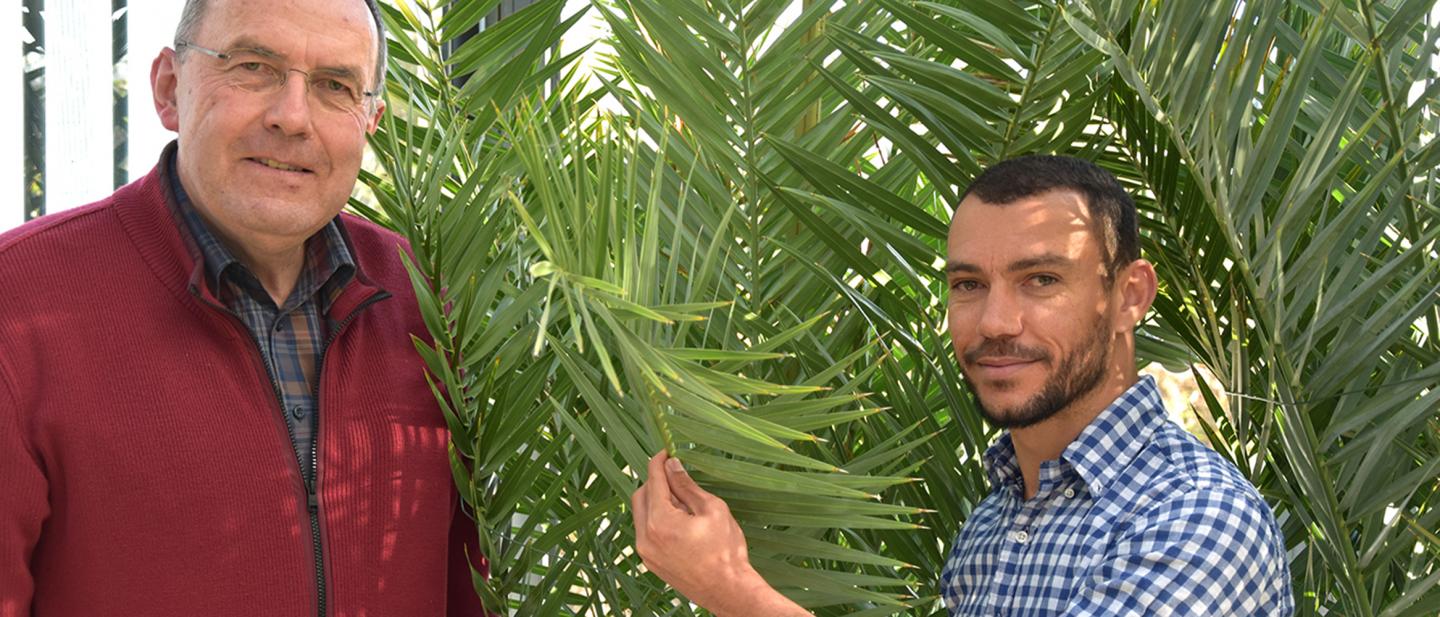
Credit: JMU Wuerzburg
In 1956, the Würzburg botanist Otto Ludwig Lange observed an unusual phenomenon in the Mauritanian desert in West Africa: he found plants whose leaves could heat up to 56 degrees Celsius. It is astonishing that leaves can withstand such heat. At the time, the professor was unable to say which mechanisms were responsible for preventing the leaves from drying out at these temperatures. More than 50 years later, the botanists Markus Riederer and Amauri Bueno from Julius-Maximilians-Universität Würzburg (JMU) in Bavaria, Germany, succeeded in revealing the secret.
To understand what the two scientists discovered, one must know more about the somewhat complicated structure of a plant leaf. Plant leaves, for example, have a skin that is usually invisible to the human eye. “You can see the skin in the tomato,” explains Professor Riederer, head of the JMU Chair of Botany II. Bioscientists speak of the “cuticle”. It can be imagined as a very thin plastic foil. Without this foil, the leaf of the plant would dry out within a short time: “the water permeability of a cuticle is even lower than that of a plastic foil.”
Constant trade-off: Open or close pores?
The plant skin is not a continuous layer that would extend over the whole leaf. It contains numerous pores, called stomata, which can open and close. The plant “feeds” through these stomata. Riederer: “it thereby uptakes the carbon dioxide the plant needs for photosynthesis.”
The problem is that whenever the pores open to acquire carbon dioxide, water also evaporates. Therefore, desert plants, in particular, are continually undergoing a balancing process: do they uptake carbon dioxide to grow further, or do they close the pores to retain the precious water? According to Riederer, every desert plant decides a little differently.
Colocynths are water-spenders
The plant colocynth (Citrullus colocynthis), also known as bitter cucumber, a wild relative of the watermelon, opens its pores when exposed to heat in order to cool down the leaves by transpiration cooling. It “sweats” so to speak. “This makes colocynth a water-spender,” explains the JMU professor of ecophysiology.
The plant can afford this because it has a very deep root. This enables the plant to tap water sources deep in the desert soil. As Otto Ludwig Lange found out during his experiments in the desert, the colocynth manages to make its leaf up to 15 degrees cooler than the desert air.
Date palms are water-savers
The date palm behaves quite differently. The second Würzburg experimental plant, like the colocynth, lives in oases and wadis – river valleys that dry up over long periods. “In contrast to the colocynth, it is a water-saver,” says Riederer.
Because the palm does not “sweat”, its leaves sometimes reach extremely high temperatures: they can be 11 degrees Celsius above the air temperature. How can it be that the leaves do not dry out at these high temperatures? This is what JMU biologist Amauri Bueno investigated in his doctoral thesis.
High-temperature wax for survival
His results, published in the Journal of Experimental Botany, revolve around the wax, which is embedded in the skin of plants and ensures their low permeability to water. After extensive laboratory tests, Bueno discovered that this wax differs between the colocynth and the date palm.
The date palm has a wax that can withstand high temperatures and therefore has a much more waterproof skin than the colocynth, even at extreme temperatures. Only because of this special wax the palm can survive in the desert. If the wax had a slightly different chemical composition, the leaves would dry very quickly, especially at high temperatures.
According to Riederer, these experiments were highly challenging because the wax embedded in the skin is very complicated from a chemical point of view. Not all secrets have been revealed yet. The bioscientists still do not understand why one plant skin is more permeable for water than the other.
Interesting for plant breeding
These current findings from JMU may be of importance for plant breeding. If one wants to cultivate crop plants in places where is very hot and dry or where climate change could make the surroundings hotter, one has to pay attention to the plant skin when searching for suitable plant varieties. If plants with certain cuticle waxes are selected for breeding, they have a better chance of survival in hot locations.
###
Media Contact
Markus Riederer
[email protected]
Original Source
https:/
Related Journal Article
http://dx.




